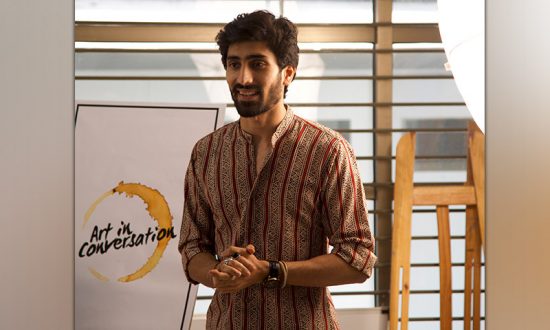Harsimran Juneja, is the Co-founder and Director of the Uno Lona Academy for arts and design education. He has received a masters in Design Management and Cultures from The London College of Communication, University of the Arts. He also plays the role of a mentor and a teacher at the academy. He is one of the few artists of his age to have been featured in many eminent art galleries worldwide and had several group shows to his name.
A majority of us are products of education systems that become narrower in terms of focus as we grow old, often limiting our exposure to knowledge outside of the templates designed by schools, colleges and universities. While a majority of these templates successfully build us into creative professionals, learning doesn’t end with their certificates, diplomas or degrees, and it shouldn’t.
We live in a world that is ever-changing and at speeds that are often baffling. And to stay up-to-speed in this fast environment led majorly by advances in technology, we need to become independent and take ownership of our learning that can help us progress in our careers and beyond.
For instance, imagine that you graduated in 2010 with a degree that specialized in Fashion Design. Back then, the use of Artificial Intelligence for design or the practice of ‘generative design’ was unheard of. But in 2018, a brand like Tommy Hilfiger partnered with IBM to use artificial intelligence in their design process to develop a collection that was futuristic based on trends research. Let’s look at reasons why you need to take ownership of your learning:
Art and Design and its disciplines develop skills and knowledge that are transferable across other disciplines
For example, if you are a product designer who is particularly interested in automotive design, you may have to learn about aerodynamics or other physics and engineering related concepts to be able to design successfully.
The very practice of art and design depends on the concept of experimentation
Artists and designers are encouraged to have their own creative voice. A voice that is identifiable easily and is directly associated with one’s identity. For example, artist MF Hussain had a distinctive way of drawing figures and painting with bold reds and yellows. To be able to find your own voice requires you to endlessly experiment with your work. And this experimentation often requires you to learn new things.
Learning is at the core of innovation
Innovation is often fuelled by a problem, developed using research but catalysed through learning. At every stage of development, there is learning that inches you closer towards innovation. This learning may be by chance or may even be self-directed, motivated by the need to achieve something that has never been done before.
Learning in art and design builds competencies that are crucial to working in the 21st century.
Numerous theorists and philosophers have outlined how the arts are capable of developing creativity and imagination. But it doesn’t end at the obvious. The arts are also capable of developing critical thinking, communication skills and problem solving. And these competencies in still confidence, all of which are crucial in a work-environment.
Taking ownership of your learning implies having intrinsic motivation for growth. One needs to value creativity as much as literacy and build upon multiple intelligences. If one wishes to be prepared for a future that is unknown – and uncertain – one should be rethinking the role of creativity and ownership in education. The learning process is nimble and way more methodical when your drive comes from the desire to master the new capability to become a better rendition of yourself. Taking ownership of your learning is hard, but it is also extremely rewarding as you gain independence and understanding of what you’re actually capable of.




